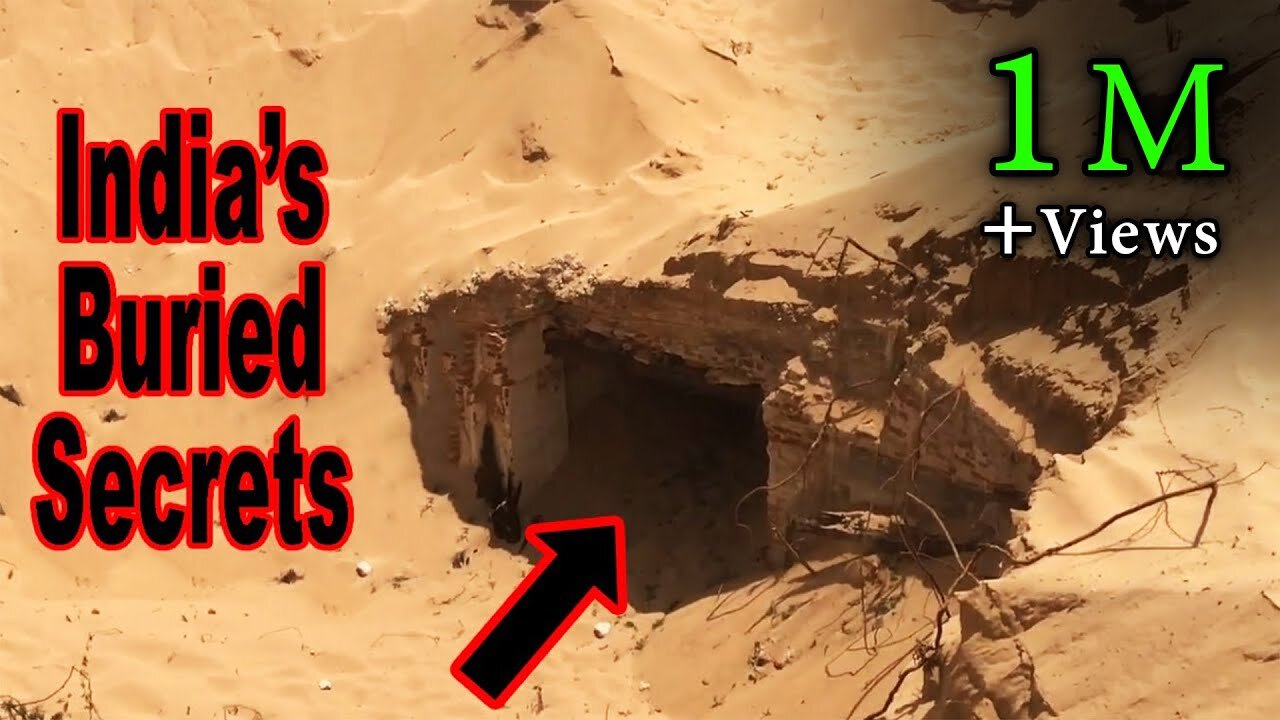Premium Only Content

They found WHAT underground? Strange Ancient Artifacts Unearthed in India| Praveen Mohan |
𝗪𝗲 𝗻𝗲𝗲𝗱 𝘆𝗼𝘂𝗿 𝘀𝘂𝗽𝗽𝗼𝗿𝘁:
If you feel this work is important to be done in the current times, please help us out in producing more such content.
► PayPal :- https://paypal.me/hindutvawadi
★ Instagram :- https://instagram.com/praveenET
★ Twitter :- https://twitter.com/IamPraveenMohan
★ Email id :- phenomenaltravelvideos@gmail.com
00:00 - Antique Statue Found
02:36 - Buried Temple Found
04:52 - Monolithic Bull Statues
06:48 - Monolithic Naga Excavated
07:10 - Ayodhya Excavation
09:52 - Lingams from Waters
11:45 - Conclusion
Hey guys, today we are going to talk about some shocking ancient artifacts found in India. Let's watch this clip. The person who sent me this clip claims that this was found in an archeological site called Keeladi, however I do not think that this was found in that site. Keeladi is a protected archeological site and only archeologists can dig in that site. Just by looking at how hundreds of people are pulling up this ancient statue, we can understand it was found somewhere else, accidentally while digging the ground for house construction or a water well. Most archeological finds are done accidentally by locals, you can see how excited people are. This is definitely an antique statue, probably around a thousand years old. This statue shows Shiva, in a specific form called Nataraja, and bronze statues of this style mostly belong to the period of Imperial Chola dynasty who ruled about a 1000 years ago.
Ok so you just saw a mesmerizing statue of Shiva buried underground and is being revealed after centuries of burial. But in a city called Nellore, an entire temple was buried and it has come out last week. You can see all of them wearing masks because of Covid19. This was an accidental discovery, they were sand mining, they were trying to take the sand for commercial purposes from this area, and they accidentally found a huge temple completely buried. You can see these 2 guys, removing the sand, and you may think this was the ground level. No, these guys are standing almost on top of the temple tower. You can see how they are casually revealing a deity set up on the tower. Where is the temple entrance? It is buried in the sand. Now they used the giant excavators and they uncovered this entrance. The machine is going in and removing the sand from the original entrance of the temple.
Finally, you can see the ground level of the temple. That's the entrance to the temple. When we look at the close up of the ground level, you can see the temple is made of bricks and you can see the plastered walls. The walls are relatively untouched and have not undergone much damage. And you can see there are more chambers inside as well, there are more walls inside. Let us go near the entrance and take a peek at what's inside. Brick walls and brick doorway. Locals say this is a Shiva temple and they have found a lingam inside. When we look at the close-up of the tower, you can see that it is also built with bricks and has been plastered with lime mortar.
Important archeological finds have been made in Ayodhya, which is the Birthplace of Lord Rama, and also the location of King's Baburs Mosque known as Babri Masjid. But before we look into this, we are going to look at some fascinating ancient artifacts revealed in a small village called Arasinakere. What they found here is very strange. Two giant monolithic bull statues, the bull, known as Nandhi is the mount of Lord Shiva. And usually, you should just find one Bull, but surprisingly you see a pair of bulls. The bigger one is about 15 ft in length and 12 ft in height, so this is gigantic and the other one is just a little bit smaller. This excavation was also not started by archeology department, the villagers found it, and then they informed the authorities. These bulls are unfinished. How do I know this, right? Because, look at the eyes, you don't see the eyeballs, the eyes are not finished. It is a custom in India, to open the eyes at the very last, you finish sculpting everything, and then you carve the eyeballs. This practice is still followed by Hindu sculptors. And look at the texture of the stone surface, plenty of tool marks and polishing has not begun. It would be a good guess to think that there are giant lingams buried nearby. At least 2 of them. Perhaps this was a manufacturing site for the sculptors, and they could have abandoned it for some reason.
#India #Hinduism #PraveenMohan
-
 4:00:42
4:00:42
Badlands Media
12 hours agoThe Narrative Ep. 35: Codex of Truth
87.9K42 -
 3:55:56
3:55:56
Due Dissidence
14 hours agoSchmuley TRASHES Shapiro, Maxwell Sings For Pardon, Uhuru Doc Preview - Live From St. Louis!
44.3K44 -
 LIVE
LIVE
Lofi Girl
2 years agolofi hip hop radio 📚 - beats to relax/study to
415 watching -
 2:23:21
2:23:21
PandaSub2000
5 days agoMadison VR (Part 4) | PSVR 2000 (Original Live Version)
23.7K2 -
 2:34:32
2:34:32
Badlands Media
5 days agoCODEX 9/11
303K258 -
 1:53:43
1:53:43
Nerdrotic
9 hours ago $0.32 earnedMysteries of 3I/ATLAS | Forbidden Frontier #113
58.4K5 -
 2:04:21
2:04:21
vivafrei
1 day agoEp. 278: D.C. Peace Wave! Big Tish & Nipple Judge SPANKED! "Maryland Man" Trafficker FREE & MORE?
115K133 -
 3:02:42
3:02:42
Damysus Gaming
5 hours agoBorderlands 3 - Part 8 - FL4K Time | Children of the Vault be Warned!
25.4K -
 1:30:28
1:30:28
Patriots With Grit
8 hours agoWhat You Should Know About Harmful Vaccine Ingredients And What To Say To Your Doctor, Pediatrician, Health Department or School When They Pressure You, Your Kids Or Your Family Members | Dr. Bryan Ardis, D.C.
20.7K8 -
 2:21:12
2:21:12
This is the Ray Gaming
5 hours ago $0.03 earnedSunday Night Live with the Boys | Rumble Premium Creator
12K